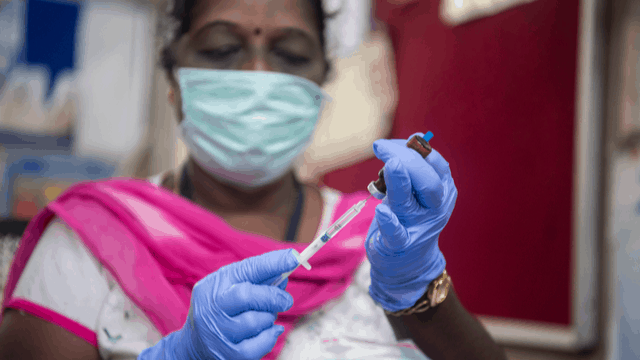August 03, 2021

The Question: In India, an estimated 400,000 children under the age of 5 years die annually from vaccine-preventable diseases, such as pneumonia, diarrhea, and measles. India’s Universal Immunization Programme (UIP), with an annual budget of $2 billion, immunizes 26 million newborn children every year. Despite the program’s scale, India has yet to achieve the universal coverage of routine childhood vaccines. The most recent national estimates from 2016 indicate only 62% of 12- to 23-month-old Indian children received full immunization (BCG, measles, and three doses each of polio and DPT).
In addition to low coverage, failure to vaccinate children at recommended ages is a major challenge. According to a 2016 study, among 10- to 23-month-old children the proportion of delayed doses (i.e., more than 28 days after the minimum eligibility age) ranged from 23% for BCG to 35% for the measles vaccine. Timely vaccination is critical to curb transmission of highly contagious diseases such as measles that can rapidly affect a large number of children and hinder long-term immunity against other diseases.
In December 2014, the Government of India launched Mission Indradhanush (MI) to increase full immunization coverage. MI was a periodic intensification of the routine immunization (PIRI) program which targeted unvaccinated and undervaccinated children by allocating more resources to underserved areas. It was implemented in 528 districts—with low initial full immunization coverage and high dropout rates—in four phases during between April 2015 and July 2017. Robust evidence on the impact of MI on desired programmatic and immunization outcomes has been limited with studies not controlling for confounding factors. This study estimated the associations between MI, and routine vaccination coverage and timeliness among children.
What We Found: The analysis found that the full immunization rate was 27% higher among children under 2 years old residing in MI phase 1 and 2 districts (intervention group) as compared with those residing elsewhere (control group). The rate of receiving all vaccines at recommended ages was 8% higher in the intervention group. Receiving doses of oral polio vaccine (OPV) birth dose, OPV dose 1 (OPV1), OPV2, OPV3, bacillus Calmette–Guérin, and hepatitis B birth dose vaccines were 9%, 9%, 11%, 16%, 5%, and 19% higher in the intervention group than the control group, respectively.
Why It Matters: According to the lead author of the study, Amit Summan, “Our findings hold tremendous importance for India’s Universal Immunization Program. In the short term, MI-like programs could substantially boost vaccine coverage and on-time delivery rates. However, their long-term sustainability and resource allocation decisions for immunization will need to be evaluated further”.

